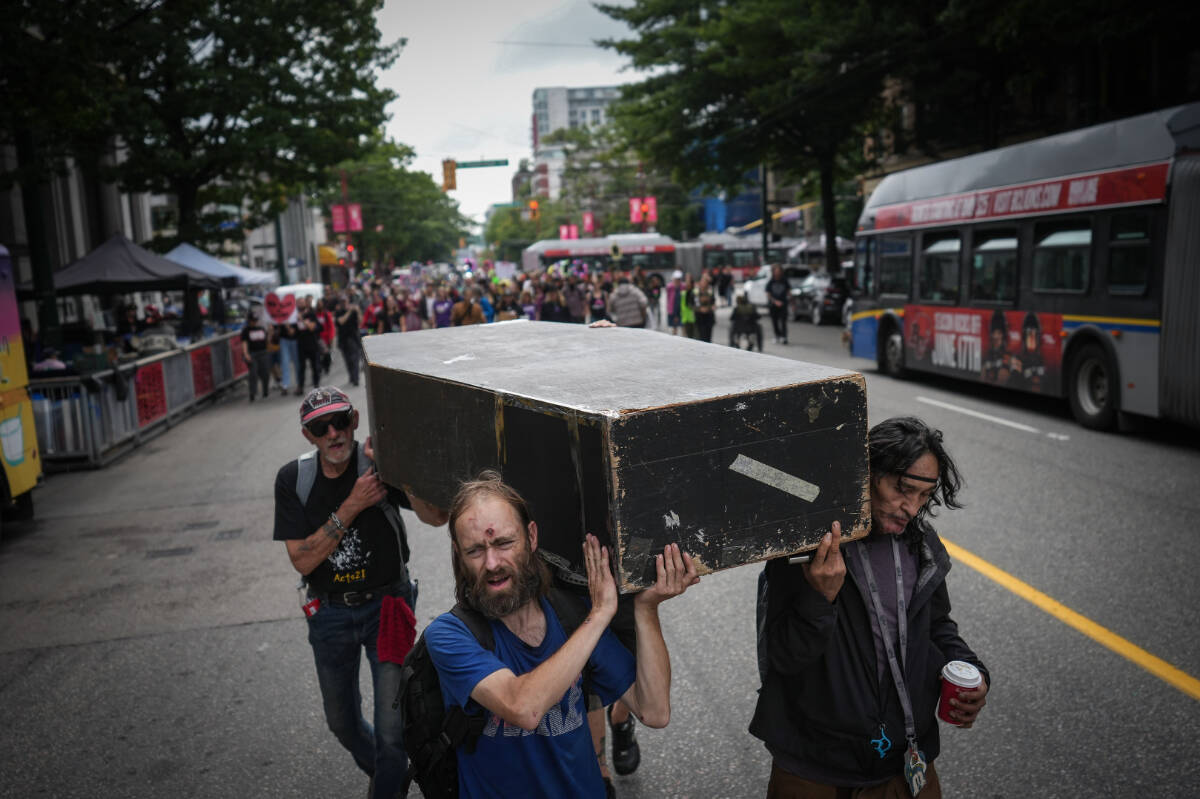A BC Coroners Service death review panel is calling on the province to expand access to safer supply drugs by removing the requirement for a doctor’s prescription. B.C.’s mental health and addictions minister says that’s out of the question.
The recommendation was the main outcome of the third expert report on B.C.’s toxic drug crisis, released on Wednesday (Nov. 1). The death review panel noted that while an estimated 225,000 British Columbians use unregulated drugs, fewer than 5,000 of them receive safer supply prescriptions. The remaining 220,000 people are at a greater risk of drug injury or death, the panel said.
It emphasized that a comprehensive strategy is needed to tackle the crisis, but that the fastest way B.C. can save lives is to increase access to regulated drugs. This, the panel said, will require both an expansion of the existing medical model, and the introduction of non-medical options. In other words, the panel said there needs to be a way for people to access safer supply without going through a doctor first.
“It’s a means to keep people alive and to support them to wellness,” Chief Coroner Lisa Lapointe said Wednesday. She first called the panel into existence in 2017, one year after B.C. declared the toxic drug crisis a public health emergency.
Since then, more than 13,000 British Columbians have died – enough to fill the Save-On-Foods Memorial Centre arena and still have 6,000 people waiting outside, said the panel’s chair, Michael Egilson. Close to six people die from toxic drugs in B.C. every day.
The panel said the current evidence is very clear that the main driver behind those deaths is the toxicity, volatility and unpredictability of the unregulated drug supply. This was recognized by B.C. in 2021 when it introduced a limited safer supply program, the first in Canada.
The death review panel said the current program doesn’t go far enough, though. It requires that people go through the health-care system, which can be difficult given that one million British Columbians don’t have a family doctor and many report experiences of discrimination. The panel said the current program is also limited in terms of geography, with most people only accessing it in Victoria and Vancouver, and in terms of the types and strengths of drugs available.
Offering regulated drugs to people without the requirement of a prescription would reduce those barriers, the panel said. It would also mean people would know exactly what they are consuming, instead of having to chance it with drugs purchased off the street.
Egilson recognized there are concerns that a safer supply could be taken advantage of and resold. He said those concerns are legitimate, but that experts have seen no indication with B.C.’s current limited program that diversion is taking place. He added that various measures could be implemented to further protect against diversion, including charging safe supply users the same price as street drugs go for to remove any incentive for reselling them.
Mental Health and Addictions Minister Jennifer Whiteside said non-prescription safe supply is off the table, though. She said B.C. will consider how to increase access to prescribed drug alternatives, but that they won’t contemplate anything outside of the health-care system.
“These are very serious drugs with very serious consequences and it is hard to imagine how we shift to a system that doesn’t have medical oversight of access to those drugs,” she said.
Lapointe called Whiteside’s immediate refusal of the recommendation disappointing.
“If we don’t take (the panel’s) best advice then the onus is on us as a province to sadly watch the death toll continue.”
READ ALSO: Overdoses from smoking toxic drugs outpace B.C. prevention sites
READ ALSO: Pandemic isolation fed B.C.’s toxic drug crisis: public health officer

